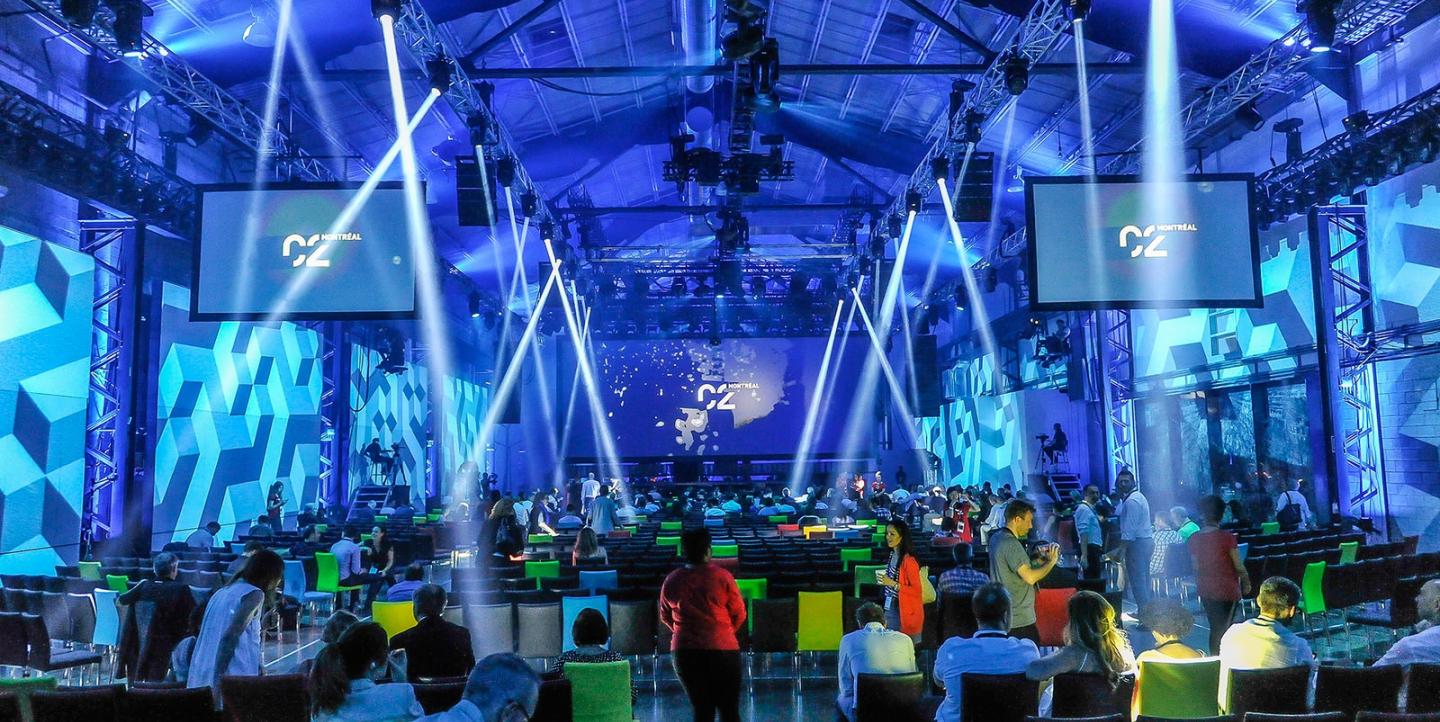At C2 Montreal, a conference for the creative thinkers of tomorrow, the future of media was on everyone’s mind. This year, the international conference hosted people like VICE cofounder Suroosh Alvi, who took risks that paid off, as well as editors and producers from traditional media still trying to adapt.
During his talk, Alvi recounted VICE’s story from its beginning in 1994 in Montreal. He had just gotten out of rehab, and Quebec was in the midst of an economic downturn. He was confident when creating VICE, a free, monthly, English-language magazine in a big, mostly French-speaking city. Since then, VICE has grown to a multilayered media company. Viceland, VICE Media’s TV channel, launched in the U.S. and Canada in February will soon be available in 20 more countries.
“The story of VICE is a survival story, but what kept us going is that we believed there was a need for it,” Alvi said.
Diverse talks and panel discussions approached key components for media in the future.
Elizabeth Tobey, head of community engagement at Medium, highlighted the importance of connecting with and engaging audiences. To her, having a powerful community means having people say “this is my people, this is where my home is.” Her advice is to embrace data — even if you’re an English major like her, she added.
The most important panel focused on the next steps traditional media should take in order to survive in a fast-changing media landscape. The conversation was mediated by Elizabeth Plank, editor at Vox Media, and included Olivier Royant, editor-in-chief of Paris Match; Guy Crevier, president of La Presse; Guy A. Lepage, talk show host; and Marie-France Bazzo, journalist.
Three issues stood out during this talk:
The print problem
Royant, who is in charge of Paris Match, the French equivalent of former Life magazine, argued that print was still very important, especially in a digital media landscape.
“A magazine is a personal object with a sensory experience. There is no need to get rid of that object,“ he said.
 But the success of La Presse+, the first North American newspaper to exist completely on its tablet version on weekdays, also proves readers are interested in new platforms. Throughout the week, readers have to access the digital version available through its tablet application as the newspaper only has a paper version on the weekend.
But the success of La Presse+, the first North American newspaper to exist completely on its tablet version on weekdays, also proves readers are interested in new platforms. Throughout the week, readers have to access the digital version available through its tablet application as the newspaper only has a paper version on the weekend.
Crevier, president of La Presse, wanted to create richer stories with graphics, interactive maps, videos and photos. The tablet version also provides valuable analytics to the La Presse newsroom.
"When we had a normal newspaper, it was impossible to know what section had been read and how long the reader had spent reading it,” he added.
He is not the only one who made the choice to embrace digital publishing. Bazzo, a famous Quebecer journalist, launched her magazine on tablet to reach another generation. She said she also thinks the format allows her to be more creative and flexible.
Too much information: How to concentrate on quality over quantity
Royant sighed when talking about BuzzFeed’s exploding watermelon video, which boasted more than 800,000 viewers during its original Facebook Live broadcast — much more attention than any piece of serious reportage would have gotten.
“It is frustrating,” he said.
He said his newspaper devotes a lot of resources producing serious reporting, but competition is hard on the internet. But he added it is not new. When Paris Match launched after World War II, people were not interested in their coverage of the war. When they decided to pick a photo of a famous actress’ wedding for their magazine cover, sales increased.
However, he said he is not discouraged. He believes a good story will always be a good story. “Humans don’t change and emotions are strong,” he said.
La Presse, one of Quebec’s most-read newspapers, is proud to say its readers now spend 40 minutes every day on the tablet consuming news.
“The media of the future will need to have a strong DNA,” Crevier told IJNet. He said La Presse is trying to differentiate itself by telling stories with rich content. La Presse editor-in-chief Eric Trottier added that its journalists work in teams and collaborate with graphic designers.
How to make money on the internet
“Creators on the web are underpaid — or not even paid,” said Lepage, a famous Quebec producer and talk show host. When a show is made for the web, it gets one-fifth of the budget of traditional television, he continued. “In the future of the web, we [creators] need to be respected and paid a fair amount.”
Royant argued that to make money, media have to pay attention to their communities and create loyalty to incite them to subscribe and pay.
Clothilde Goujard is a freelance journalist based in Montreal, Quebec.
Main image CC-licensed by Flickr via Ville de Montréal. Secondary image taken by Allen McEachern.

